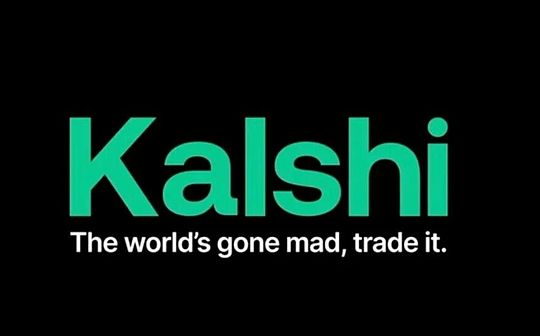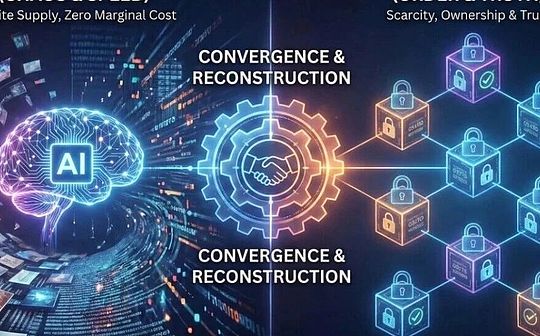
Author: @Web3Mario
introduction: On May 21, 2024, Vitalik liked a project orb.land in Warpcast, and studied it in depth, and was quite interested in the design ideas behind it.So I spent some time reading the book “Radical Market” and I have some experiences and hope to share them with you.Of course, I found an introduction to the project itselfMore detailed articles, convenient for everyone to read and understand.In general, the book proposes a politically tilted left-leaning ownership system – a shared ownership mechanism, and a combination of the Hamberg tax model, aims to solve the social injustice caused by the monopoly of resources.This is inspiring to solve the problems faced by the Web3 industry, such as the highly popular high-valuation VC coins recently.
What exactly does “Radical Market” talk about?
First of all, I hope to briefly introduce some basic information about this book, the full name is “Radical Markets: Breaking Capitalism and Democracy’s Power Fight and Reshaping Our Economy”, which was created by Glenn Weill and EricPosner co-authored in 2020, in which Glenn Weill is the lead researcher at Microsoft Research and a visiting professor at Yale University, focusing on innovative research in market design and public policy.Eric Posner is a professor at the School of Law of the University of Chicago and a well-known jurist. His research areas cover contract law, international law and legal theory.
Overall, the book aims to solve a series of deep-seated problems in modern capitalism and democratic systems.Specifically, the following key issues are mainly involved:
1. Wealth and income inequality: In modern society, wealth and income inequality is becoming increasingly serious.The traditional capitalist system often leads to accumulating a large amount of wealth in a few people, while the majority face economic pressure.The authors believe that this inequality is not only unfair, but also leads to social and economic instability.
2.Inefficient allocation of resources and assets:Many resources and assets cannot be effectively utilized under the existing market system.For example, in the land and real estate markets, many assets are idle due to speculation and hoarding and fail to realize their full economic potential.This not only wastes valuable resources, but also exacerbates housing and land shortages.
3.The flaws of democratic system: There are many problems with the current democratic system, such as the defects of the voting system, political polarization and the excessive influence of interest groups.These problems make it difficult for democratic systems to truly represent the interests of the people, resulting in a lack of efficiency and fairness in policy making.
4.Global immigration issues: Existing immigration policies are usually subject to strict state control, limiting the free movement of labor.This not only affects individual economic opportunities, but also hinders the overall development of the global economy.The authors believe that the free flow of immigration can significantly improve the efficiency of global resource allocation and promote economic growth and social progress.
5.Data and privacy issues: In the era of big data, personal data has become an important economic resource.However, the control of most data is currently in the hands of a few large companies, and individuals’ right to use and income of their own data is restricted.The authors propose that individuals should be given more data rights to achieve fairer data use and distribution of benefits.
6.Market monopoly and insufficient competition: Many industries have serious market monopoly problems, and large enterprises control the market through mergers and acquisitions, hindering fair competition and innovation.The authors believe that stricter antitrust policies are needed to break this monopoly and promote fair and healthy market development.
In response to these problems, this book provides some solutions, which in summary includes five points:
-
Shared ownership:Weil and Posner suggested a system called “Common Ownership Self-Assessed Tax” (COST).This system puts all assets in a state of continuous public auction through self-evaluation and public pricing, thereby reducing monopoly behavior and promoting the effective use of resources. This self-evaluation tax system is the so-called “Haberg tax”.
-
Voting reform:They proposed the “quadratic Voting”, in which each citizen has a certain number of voting points in each vote, which can be allocated according to the importance of a certain issue.This can more accurately reflect the public’s preference for different issues and avoid the opinions of a few people being ignored.
-
Immigration Policy:The author suggests establishing a “Labor Market Auction” to determine the number and conditions of immigration through bidding.This approach aims to more effectively utilize the economic potential of immigration and promote the optimal allocation of global labor resources.
-
Data Rights:The book also discusses the property rights of personal data, advocating the granting of individuals ownership and control over their data, ensuring that the use of data can truly benefit the creators of the data, rather than profiting only by large technology companies.
-
Antitrust Policy:They stressed the need for stronger antitrust laws to prevent market monopolies and advocated the decentralization of economic power in large enterprises to promote fair competition and innovation.
It can be said that the economic model designed by Orb Land for the Web3 personal consulting service scenario is to refer to the first mechanism, namely the so-calledShared ownership in combination with self-assessment tax systemSystem, hereinafter referred to as the shared ownership system.So what isShare ownershipWhat is the effect of the system?
The shared ownership system brings liquidity to assets through compulsory means and avoids unfair problems caused by monopoly
The shared ownership system is a social resource allocation system, and its system design mainly includes the following three aspects:
1.Self-assessment and public pricing: This system requires that the owner of each asset needs to conduct an open self-evaluation of the value of his own assets.This includes all types of property, such as houses, land, commercial assets, etc.The price of this self-assessment is not only determined by the owner themselves, but is public and can be seen by anyone.
2.Continuous auction mechanism: At any time, anyone can purchase the asset at the self-evaluation price of the asset owner.This means that owners must be very careful to set their assessed price because if set too low, they may lose their property.At the same time, in order to prevent owners from circumventing potential transaction possibilities by overestimating the value of their assets, they will be asked to pay a certain percentage of tax based on the self-assessment price.This tax can be 1% to 7% of the asset’s value. The specific proportion depends on the specific policy. This tax is also called the “Haberg tax”, inspired by economist Arnold Hamberg in 20The concept proposed in the 1960s.
3.Tax purposes: Taxes collected will be used as public income to provide public services and infrastructure, or to be allocated to communities to support economic development.At the same time, this tax mechanism can replace or supplement traditional property taxes, thereby simplifying the tax system and increasing the government’s fiscal revenue.
Several benefits are brought by the design of the above mechanism. First of all, this mechanism can effectively reduce monopoly and resource waste. Since all assets are being auctioned continuously, the behavior of monopoly holding resources will be reduced, and the allocation of resources will be more efficient..In addition, people will also be more active in using and developing their assets because the cost of holding unused assets becomes higher.The second is to promote economic liquidity. An open self-assessment asset pricing and continuous auction mechanism will promote market liquidity, allowing assets to be transferred more quickly and reducing market rigidity.At the same time, businesses and individuals can more easily access resources and drive innovation and economic activities.Finally, it is to increase fairness and social welfare. The taxes collected through this system can be used for public projects and welfare, and improve the overall quality of life of society.This approach can help reduce extreme inequality in wealth and resources.
The potential impact of shared ownership system on the Web3 world
Next, let’s take a look at how Orb Land uses this concept to design the Web3 personal consulting service system.Simply put, some expert users can generate an NFT through Orb Land, and anyone holding the NFT can ask their issuers for questions.The NFT has a shared ownership mechanism. First, when the user purchases the NFT, he needs to set a public sale price, and others can buy the NFT at this price anytime and anywhere. Secondly, when holding the NFT, the holder needs to bear the high cost.Hamberg tax, thus avoiding users from setting sky-high selling prices to avoid NFTs being sold.All Hamberg taxes and royalties during NFT transactions will be attributed to the issuer, and the NFT holder has the ability to score the issuer’s answers.
The reason I want to design this mechanism is that Orb Land wants to bring a continuous cash flow return to experts as NFT issuers, thus ensuring that it actively outputs the motivation to answer value actively.However, I don’t think this is good at taking advantage of the core advantages of this mechanism, because in this scenario, NFT carries the right to consult a certain expert user for questions, but this is not a scarce resource and it is difficult to seize through monopolyMonopolizing profits, for example, suppose you have an NFT issued by Vitalik, you can monopolize its voice, and he will become your exclusive consultant, and no one else can receive any advice from him, which is obviously ridiculous.matter!Therefore, the value of this model is unsatisfactory in this usage scenario, because it only hopes to promote the rapid circulation of NFTs through taxation and increase returns for issuers. Therefore, this mechanism seems very unfavorable to holdersFriendly, at the same time, if you only use this mechanism to make price discovery for an asset, you will find that this efficiency will be much lower than pricing through free market policies, i.e. through supply and demand relationships in the market.
So what is the potential impact of the shared ownership system on the Web3 world?Simply put, wherever the problems arise from monopoly are the most serious, the mechanism will be applied.Here I will introduce a scene where I am a popular high-valuation VC currency problem recently.The reason why high-valuation VC coins are a powerful tool to cut retail investors’ leeks is that most of the token economics design of We3 projects has gradually evolved with the continuous unlocking of VC Tokens. At the same time, due to VC fundsVolume has a significant advantage over retail investors.This gives VC the ability to price, so VC can raise the transaction price of the secondary market through high valuation, and then earn monopoly profits. The reason for the low circulation is that retail investors who take over are limited and cannot accept it after allIn the short term, VCs sold a lot, so in order to maintain profits.VCs usually choose to sell in a long and long way, and in this scenario, it would be exciting if Web3 projects combine shared ownership systems to redesign the token economic model!As for the specific plan, everyone is welcome to discuss it together.






